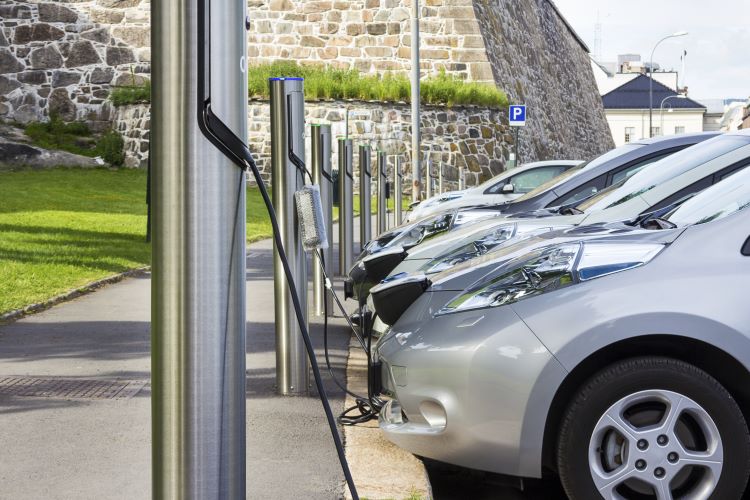Electric Cars: Revolutionizing Urban Commuting with Clean, Efficient Transportation
The rise of electric vehicles (EVs) has sparked a transportation revolution, particularly in urban environments where the need for sustainable, efficient commuting solutions is more pressing than ever. As cities worldwide grapple with air pollution, traffic congestion, and the urgent need to reduce carbon emissions, electric cars have emerged as a promising solution to these interconnected challenges. This article explores how electric vehicles are transforming urban mobility, offering a cleaner, quieter, and more sustainable alternative to traditional gasoline-powered cars.

The shift to electric vehicles also aligns with many cities’ sustainability goals. As urban areas strive to reduce their carbon footprint, the adoption of EVs plays a crucial role in decreasing overall greenhouse gas emissions from the transportation sector. This transition is further supported by the increasing integration of renewable energy sources into power grids, making the electricity used to charge EVs progressively cleaner.
What advantages do electric cars offer for city commuting?
Electric cars possess several key advantages that make them particularly well-suited for city commuting. First and foremost is their energy efficiency. Electric motors convert a higher percentage of energy into motion compared to internal combustion engines, making them more efficient in stop-and-go traffic typical of urban environments. This efficiency translates to lower operating costs for drivers, as electricity is generally less expensive than gasoline on a per-mile basis.
Another significant advantage is the convenience of home charging. Many urban EV owners can charge their vehicles overnight at home, eliminating the need for frequent trips to gas stations. This aspect is particularly beneficial for city dwellers with access to dedicated parking spaces or charging infrastructure in residential buildings.
Electric vehicles also benefit from various incentives and privileges in many cities. These can include access to high-occupancy vehicle (HOV) lanes, reduced tolls, and preferential parking spaces, all of which can significantly improve the commuting experience in congested urban areas.
How are cities adapting to accommodate electric vehicles?
As electric vehicle adoption increases, cities are actively adapting their infrastructure to support this transition. One of the most visible changes is the proliferation of public charging stations. Municipalities are partnering with private companies to install charging points in parking lots, street parking spaces, and other convenient locations throughout urban areas. This expanding network of charging infrastructure is crucial for addressing “range anxiety” and encouraging more widespread EV adoption.
Cities are also updating building codes to require or incentivize the installation of EV charging capabilities in new construction projects. This forward-thinking approach ensures that future urban developments are EV-ready, facilitating easier adoption for residents and businesses alike.
Furthermore, some cities are implementing low-emission zones or even planning for future car-free areas, where only electric or other zero-emission vehicles are permitted. These policies not only promote EV adoption but also contribute to broader urban planning goals of creating more pedestrian-friendly, livable city centers.
What challenges do electric vehicles face in urban environments?
Despite their numerous advantages, electric vehicles still face several challenges in urban settings. One of the primary concerns is the availability of charging infrastructure, particularly for residents of multi-unit dwellings who may lack access to dedicated parking or charging facilities. While public charging networks are expanding, they may not yet be sufficient to meet the growing demand, potentially leading to queues or inconvenience for EV owners.
Another challenge is the higher upfront cost of electric vehicles compared to equivalent gasoline-powered models. Although EVs often have lower operating and maintenance costs over their lifetime, the initial purchase price can be a barrier for many urban residents, particularly in cities with high costs of living.
The impact on the electrical grid is also a consideration as EV adoption increases. Cities must ensure that their power infrastructure can handle the additional load from widespread EV charging, particularly during peak hours. This may require upgrades to the grid and the implementation of smart charging solutions to manage demand effectively.
How are electric cars impacting urban planning and design?
The rise of electric vehicles is influencing urban planning and design in significant ways. City planners are now considering EV charging needs when developing new neighborhoods or redesigning existing ones. This includes integrating charging stations into street furniture, parking structures, and public spaces in ways that are both functional and aesthetically pleasing.
The shift towards EVs is also prompting cities to rethink their overall transportation strategies. Many urban areas are using the transition to electric mobility as an opportunity to promote multi-modal transportation systems, integrating EVs with public transit, bike-sharing programs, and pedestrian-friendly infrastructure. This holistic approach aims to reduce overall car dependency while maximizing the benefits of electric vehicles for necessary car trips.
Moreover, the quieter nature of electric vehicles is influencing urban soundscapes, potentially allowing for new approaches to street design that prioritize pedestrian comfort and safety. Some cities are exploring the concept of “EV-ready streets” that are optimized for the characteristics of electric vehicles, including their lower noise levels and zero emissions.
The integration of electric vehicles into urban environments represents a significant step towards more sustainable, livable cities. As technology advances and adoption increases, electric cars are poised to play an increasingly important role in shaping the future of urban mobility. While challenges remain, the potential benefits of widespread EV use in cities—including improved air quality, reduced noise pollution, and lower carbon emissions—make them a crucial component of future urban transportation systems. As cities continue to adapt and innovate, the synergy between electric vehicles and urban planning will likely lead to more efficient, environmentally friendly, and enjoyable urban spaces for residents and visitors alike.





